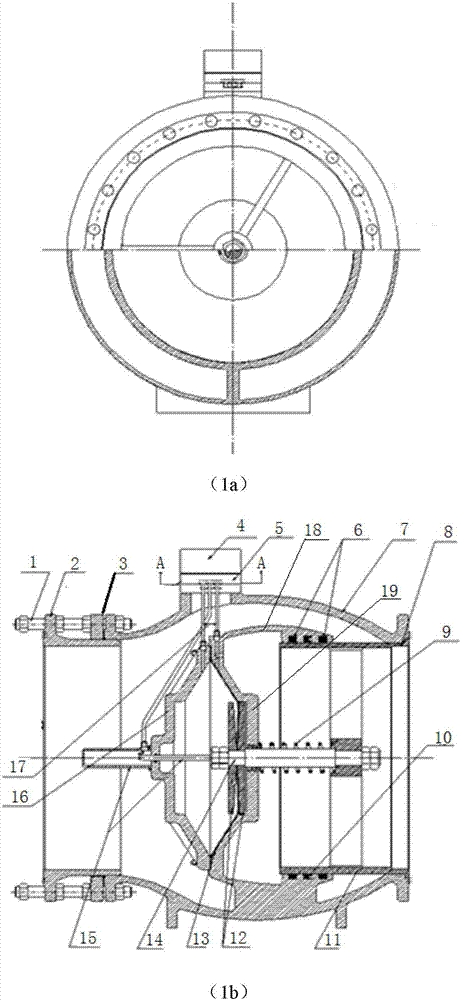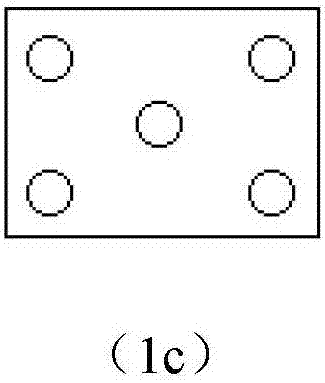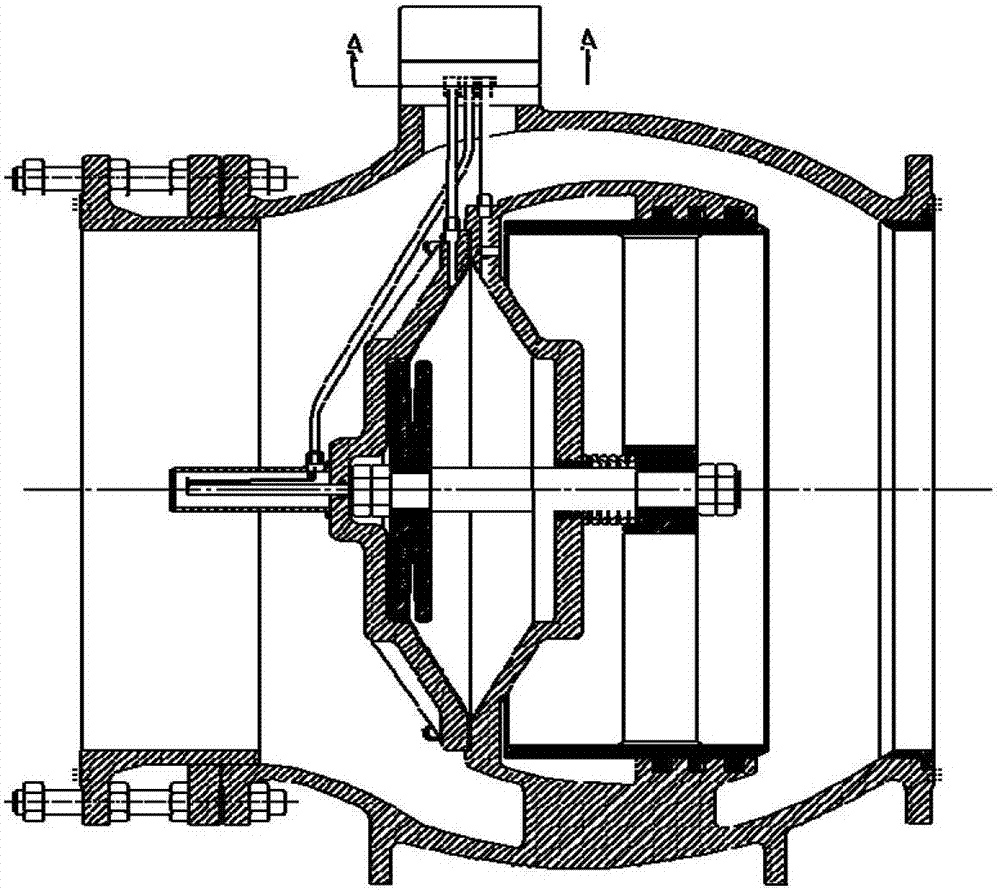A built-in diaphragm sleeve valve
A sleeve valve and diaphragm-type technology, applied in valve details, safety valves, balance valves, etc., can solve problems such as poor anti-garbage ability, poor energy dissipation effect, and non-linear flow regulation, and achieve cost reduction and structure Simple, Powerful Effects
- Summary
- Abstract
- Description
- Claims
- Application Information
AI Technical Summary
Problems solved by technology
Method used
Image
Examples
Embodiment 1
[0041] The present invention can work in pressure reducing valve mode, such as Figure 4 As shown, the working principle of the pressure reducing valve is:
[0042] The principle is that the pressure signal collected by the pressure sensor behind the valve is transmitted to the remote central control PLC, and then the PLC controls the main valve. Once the downstream flow increases and the pressure drops, the sensor immediately sends a signal to the PLC, the PLC immediately instructs to open the solenoid valves B and D, the opening of the main valve increases, and the pressure immediately recovers to the design value, and the solenoid valves B and D are closed; When the flow decreases and the pressure rises, the PLC will instruct to open the solenoid valves A and C, the opening of the main valve decreases, and the pressure returns to the set value, and the solenoid valves A and C are closed.
Embodiment 2
[0044] The present invention can work in pressure relief valve mode, such as Figure 5 As shown, the working principle of the pressure relief valve is:
[0045] The principle is that the pressure signal collected by the pressure sensor in front of the valve is transmitted to the remote central control PLC, and then the PLC controls the main valve. Once the system pressure rises above the set pressure, the sensor immediately sends a signal to the PLC, the PLC immediately instructs to open solenoid valves B and D, close solenoid valves A and C, and the main valve immediately opens to relieve pressure; otherwise, the system pressure is lower than the set value , the PLC command closes solenoid valves B and D, opens solenoid valves A and C, and the main valve is closed.
Embodiment 3
[0047] The present invention can work in flow control valve mode, such as Image 6 As shown, the flow control valve works as follows:
[0048]Once the remote central control PLC sets the standard given flow, the signal detected by the flowmeter will be fed back to the PLC immediately. If the flow exceeds the given value, the PLC will send a signal command to open solenoid valves A and C (solenoid valves B and D are closed). ), the pressure in the front chamber of the diaphragm drops, and the main valve closes the valve, then the flow rate is reduced to the given value; if the flow rate is lower than the given value, the flowmeter will feed back the signal to the PLC, and the central control will send an instruction to open the solenoid valve B, D (solenoid valves A and C are closed), the pressure in the back cavity of the diaphragm drops, and the main valve opens to supplement the flow to the given value.
[0049] Figure 7 The piping diagram of the pneumatic control valve r...
PUM
 Login to View More
Login to View More Abstract
Description
Claims
Application Information
 Login to View More
Login to View More - R&D
- Intellectual Property
- Life Sciences
- Materials
- Tech Scout
- Unparalleled Data Quality
- Higher Quality Content
- 60% Fewer Hallucinations
Browse by: Latest US Patents, China's latest patents, Technical Efficacy Thesaurus, Application Domain, Technology Topic, Popular Technical Reports.
© 2025 PatSnap. All rights reserved.Legal|Privacy policy|Modern Slavery Act Transparency Statement|Sitemap|About US| Contact US: help@patsnap.com



